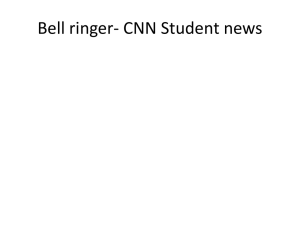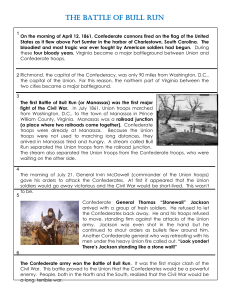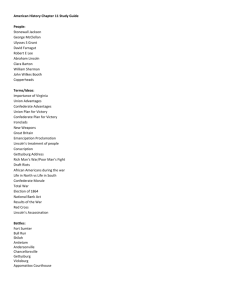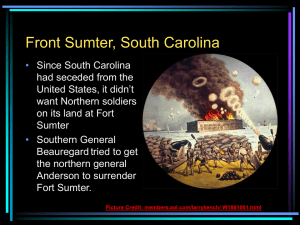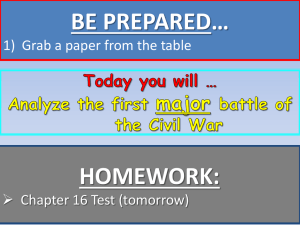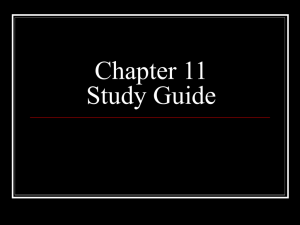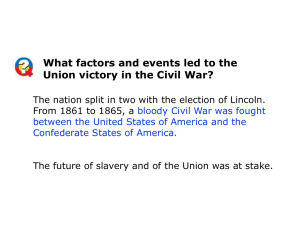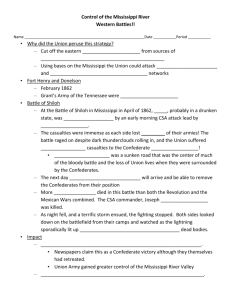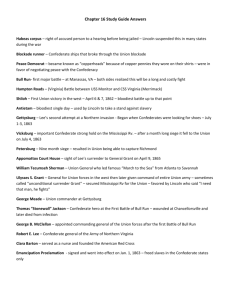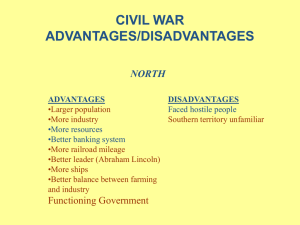The Battle of Bull run
advertisement
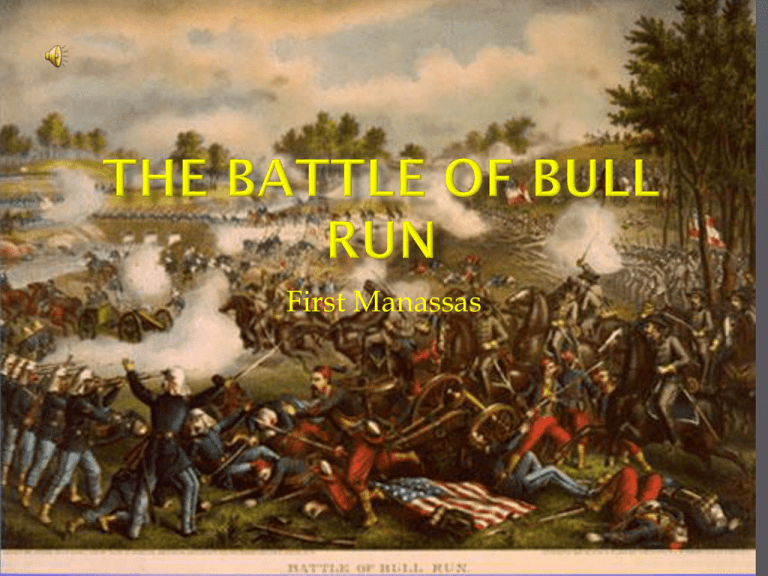
First Manassas • On July 18, 1861 Union troops began to March to Manassas They were new recruits and had only signed up for 90 days On July 21st a group of sightseers and picnickers rode out from Washington to watch the battle • Women of society were among the sightseers and had brought along trunks with fancy gowns, they believed that the day would end in a victory and a fancy ball in Richmond for celebration UNION TROOPS Brig. Gen. Irvin McDowell [USCommander Total forces-28– 35,000 (18,000 engaged)[1] CONFEDERATE TROOPS Joseph E. Johnston and Brig. Gen. P.G.T. Beauregard [CS- Commanders Total forces-32– 34,000 (18,000 engaged)[1] • • The two armies met at a stream called Bull Run. The Union forces outnumbered the Confederates 30,000 to 20,000 By midday the Union forces had driven back one of the Confederate flanks (sides) a mile The Confederates were falling back in confusion it looked like the battle would be lost for the Confederates • • A Confederate General trying to rally his troops pointed his sword toward General Thomas Jackson and yelled, “ There is Jackson standing like a stone wall! Rally behind the Virginians! As the confederates regrouped, reinforcements came down the road and launched a counter attack against the Union line • The Union soldiers were tired and hungry and had fought hard but they reached their limit. They scattered and ran toward Richmond Cavalry leader Jeb Stuart lead a charge of 500 cavalry that added to the confusion of the Union retreat Union casualties were 460 killed, 1,124 wounded, and 1,312 missing or captured Confederate casualties were 387 killed, 1,582 wounded, and 13 missing Union forces and civilians alike feared that Confederate forces would advance on Washington, D.C., with very little standing in their way There was no massing of Confederate forces. The Confederate may have won but they were ill prepared to continue the fight The Northern public was shocked at the unexpected loss of their army in a battle for which an easy victory was widely anticipated. Both sides quickly came to realize that the war would be longer and more brutal than they had thought. On July 22 President Lincoln signed a bill that provided for the enlistment of 500,000 men for up to three years of service. The reaction in the Confederacy was more muted. There was little public celebration as the Southerners realized that despite their victory, the greater battles that would inevitably come would mean greater losses for their side as well. Battlefield confusion relating to battle flags, especially the similarity of the Confederacy's "Stars and Bars" and the Union's "Stars and Stripes", led to the adoption of the Confederate Battle Flag, which eventually became the most popular symbol of the Confederacy and the South

